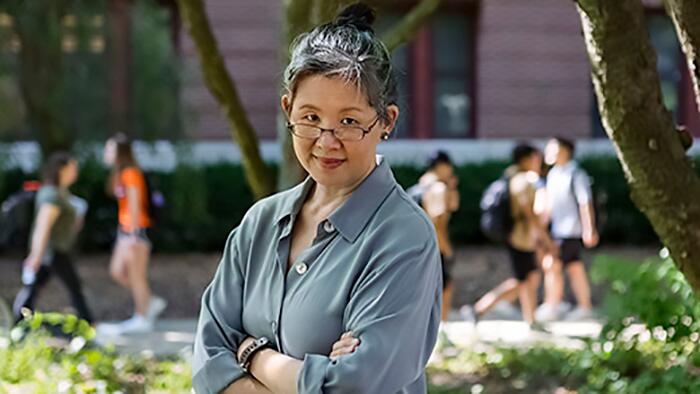Environmental greenness may not improve student test scores, study finds

CHAMPAIGN, Ill. — Researchers at the University of Illinois and the U.S. Department of Agriculture Forest Service suggest in a new study that environmental greenness may not be associated with higher test scores in schoolchildren after all.
In a study that involved more than 400 public schools in Chicago, the Illinois-led team found that there was “no convincing evidence for a positive relationship between greenness and academic performance.” The study was published recently in the journal Landscape and Urban Planning.
U. of I. recreation, sport and tourism professor Matthew Browning and natural resources and environmental sciences professor Ming Kuo replicated the methodology used in a leading study on the topic, published in 2014. According to the researchers who conducted that study, third-grade students at 905 Massachusetts public schools performed significantly better on English and math tests if their schools were surrounded by greater amounts of green foliage in the spring.
Similar to the Massachusetts study, the Illinois researchers examined the density of healthy foliage in the neighborhoods surrounding Chicago elementary schools and whether greenery was associated with higher math and reading scores over a six-year period.
Browning and Kuo’s team obtained math and reading scores for third-grade classes at the Chicago Public Schools and downloaded greenness data for those schools’ neighborhoods from a NASA website.
Based upon the NASA data, they calculated the normalized difference vegetation index – the amount of visible and near-infrared light reflected by foliage within 250, 500, 1,000 and 2,000 meters of each school.
Regions with greater amounts of vigorously growing trees and plants have higher NDVI values because healthy vegetation absorbs most of the visible light that strikes it and reflects most of the near-infrared light, Browning said.
Using the same variables and equations as the Massachusetts study, the Illinois researchers tried to predict the Chicago schools’ math and reading scores based upon their neighborhoods’ NDVI values for the months of March, July and October from 2006-12.
However, Browning and Kuo’s team found that the methodology used in the Massachusetts study was not statistically sound, producing high intercorrelations among the predictor variables, which invalidated the findings.
After tweaking the equation to address this problem, “no matter how many ways we sliced and diced it, we were finding negative relationships between green space and academic achievement in all 24 of our models,” Browning said.
The Illinois team hypothesized that its inability to replicate the original study’s findings may have had to do with the differing levels and types of vegetation found in the Chicago and Massachusetts neighborhoods. Because the Chicago neighborhoods had relatively low levels of tree cover, their NDVI values were about half of those of the Massachusetts study and primarily represented grass, which could have a different effect on academic outcomes than trees, Browning and his co-authors wrote.
Or, the relationship between greenery and academic performance might have been moderated by differences in the study populations’ socioeconomic statuses and race, they wrote. The proportion of low-income students in the Chicago study was 83 percent – twice that of the Massachusetts study – while the proportions of African-American and Hispanic students were three times higher in Chicago, at 45 percent and 48 percent, respectively.
The Illinois study is novel in that replication studies are seldom conducted in disciplines such as geography and environmental psychology, the two fields that the current study falls into, Browning said.
“About 10 years ago, there was a wave of replication studies in psychology and a number of important studies were debunked because they didn’t hold up in different populations,” Browning said.
In recent years, research on green space and academic outcomes has “become something of a cottage industry,” said Browning, who currently is conducting a systematic review of about a dozen studies on the topic. Alessandro Rigolon, a professor in the same department, is co-writing that paper.
Browning said they are finding similar methodological problems among those studies too, “and that the researchers’ conclusions that green cover improves student test scores are not well-grounded on the actual findings. The evidence for this beneficial relationship between green space and academic performance is not that strong.”
Sonya Sachdeva and Lynne Westphal, both of the USDA Forest Service, were co-authors of the recent study, along with graduate student Kangjae Lee of the Illinois Informatics Institute.